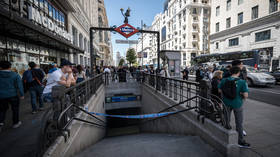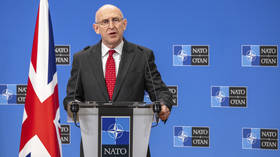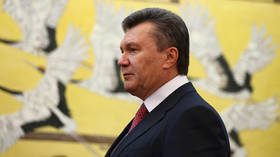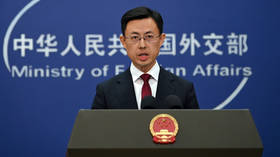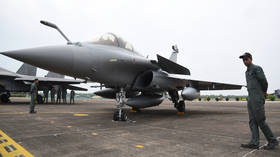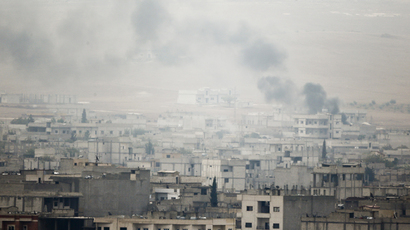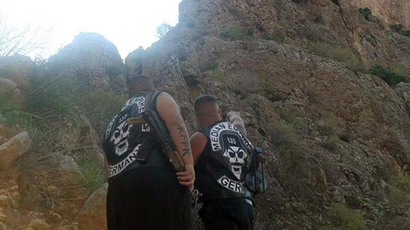ISIS teaches how to avoid NSA snooping in a tweet – report
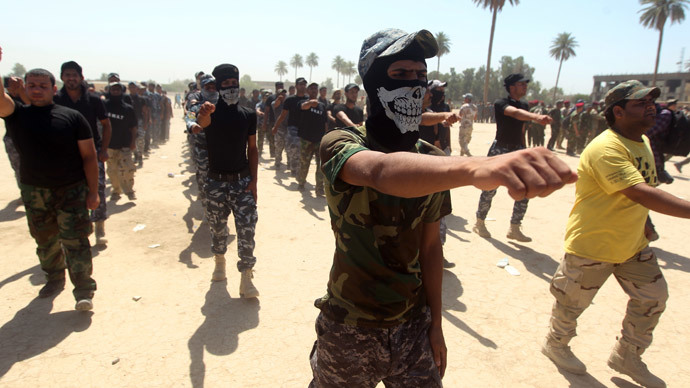
The Islamic State has released a manual instructing its members how to avoid revealing location and other data when using Twitter, according to reports. The militant group hopes to protect its fighters from the US National Security Agency’s surveillance.
READ MORE: Homemade APC: Iraqi blacksmith builds armored vehicle to fight ISIS (VIDEO)
The manual instructs Islamic State (IS, ISIS/ISIL) militants to remove metadata from tweets posted online. It also gives other pointers, like how to turn off location services on mobile devices. It advises to avoid posting names, locations, and other identifiable objects when tweeting.
The Financial Times, which obtained a copy of the PDF document, has suggested that it comes after the NSA and the UK’s GCHQ were able to get various key information regarding the Islamic State’s whereabouts by analyzing metadata from posted pictures, messages, and tweets.
“A number of security blinds have appeared that have benefited the enemy and have helped expose the identities of some brothers or identify some sites used by the mujahideen with ease,” stated the training manual, translated from Arabic.
Twitter has been a central tool for the Islamic State to spread its message across the globe and now it might be its biggest shortcoming.
The manual further explains various “gaps” and how extremist fighters leaked certain data to intelligence agencies that “could turn your hair gray.”
“We know this issue is not only tied to pictures, but to PDF files, word files and video files,” the manual states.

Metadata is key for tracking the terrorist organization, Darien Kindlund, director of threat research at US cyber-security company FireEye, told the Financial Times. “[It] can contain information about the identity of the author, when the content was created/modified, and potentially reveal location information around where the content was authored.”
The manual also calls on ISIS members to avoid tweeting details. “Your abstention from posting details and your brothers’ movements during [the] Hit camp blessed battle two days ago was the reason God granted you victory,” the outlet quoted a tweet of an ISIS supporter as saying.
The manual seems to have made an impact, as there are less ISIS fighters using Twitter, an owner of an internet cafe in an ISIS-controlled area in Syria said. “A few stayed online, but no one posts selfies next to chopped-off heads any more,” he said.
Another area of concern for the Islamic State seems to be wireless networks and WiFi ‘boosters’ used to expand internet coverage in the city, according to media reports from Raqqa, an ISIS stronghold in Syria.
Foreign surveillance agencies allegedly have the capacity to tap into those signals and use them for locating phones and other devices in the area.
ISIS also spoke out against using WhatsApp because it can be controlled by the NSA and GCHQ, the International Business Times reported.
Tracking money flow
Meanwhile, another way of tracking and locating Islamic State extremists is by following the flow of their funds, which is what a Canadian organization has been doing.
Canada’s Financial Transactions and Reports Analysis Centre announced that it has been analyzing the money flows of Islamic State extremists and forwarding the information to the Canadian Security Intelligence Service (CSIS).
“With ISIL, we have seen very clearly the devastation that terrorist groups can inflict when they have access to substantial resources,” CSIS director Gerald Cossette said on Sunday.
Meanwhile, the US has been continuing to push on with its airstrikes against ISIS. Over two dozen strikes have been launched by US fighter and bomber aircraft against militants and the oil infrastructure they control in Syria and Iraq, the American military said on Sunday.
According to the US Central Command, over half the strikes were carried out in Syria – 12 of which aimed at “degrading and destroying their oil producing, collecting, storage and transportation infrastructure.”
The airstrikes were carried out as part of the US-led operation dubbed Inherent Resolve. Launched on August 8 in Iraq, it has been aimed at the “elimination” of the terrorist group. In September, the operation was extended to neighboring Syria.
READ MORE: US military targets ISIS, 2 days & 25 airstrikes in Syria and Iraq





